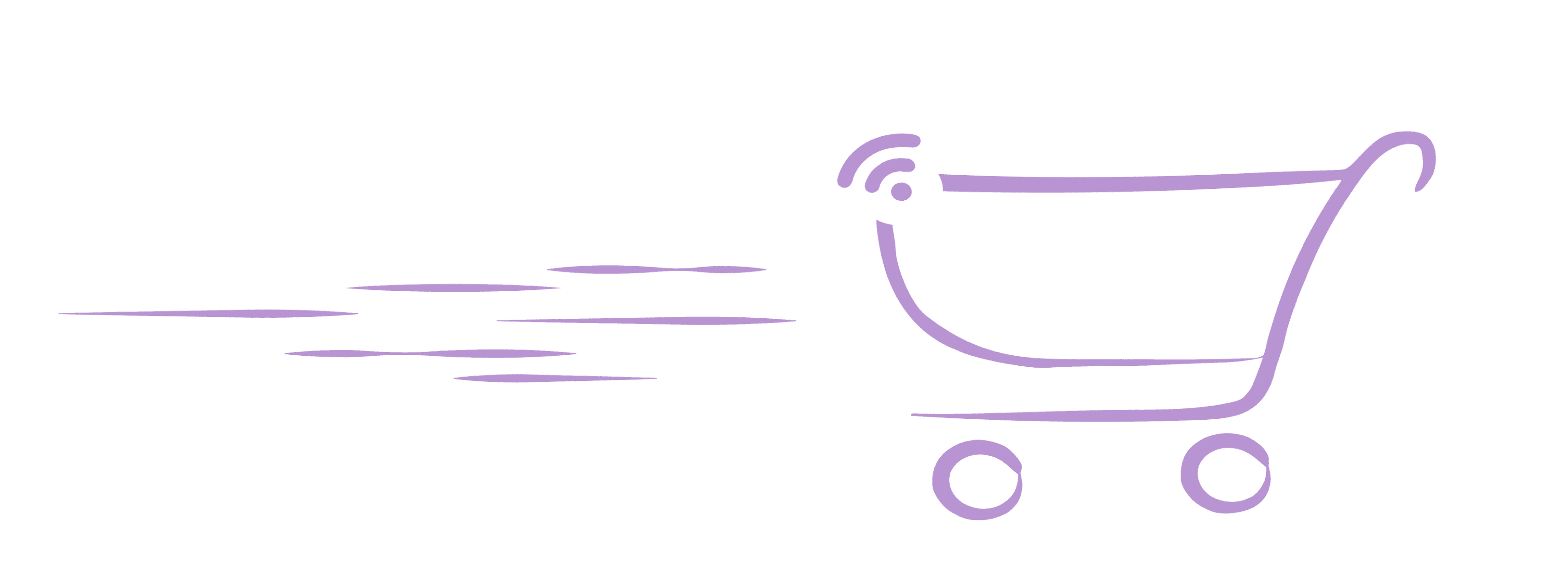
Karrie, an autonomous shopping assistant for customised experience
Challenge
Our project aimed to address the challenges of in-store grocery shopping by enhancing the experience with IoT and user-centric design, making it more convenient and seamless.
Impact
Karrie, equipped with NFC technology that not only assists in shopping journey but also adeptly manages the budget and holds heavy items. We pitched the project to a panel of industry expects and faculty and received the 'Most likely to receive investors' award.
Tools
Google Suite, Adobe CC, Figma, Miro Board, Arduino Kit, VSCode, Qualtrics
Team
Jiaxuan Zhang, Prajakta Bonde, Srishti Bijjur, and Shruti Chhajed
Duration
Jan - Apr 2023
Role
UX Designer
In-store grocery shopping experience in the US

Quantitative Data analysis: Survey

Qualitative Data analysis: Diary Study
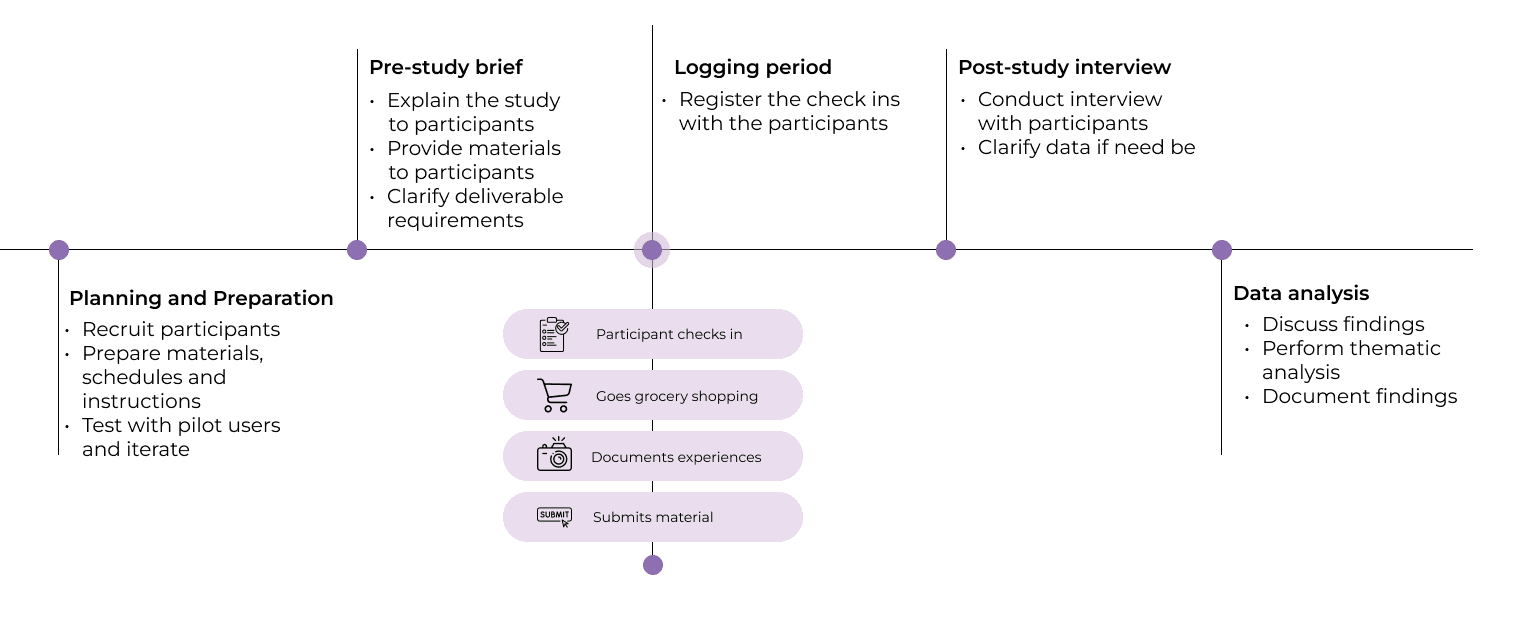
Qualitative Data analysis: Ethnographic Study
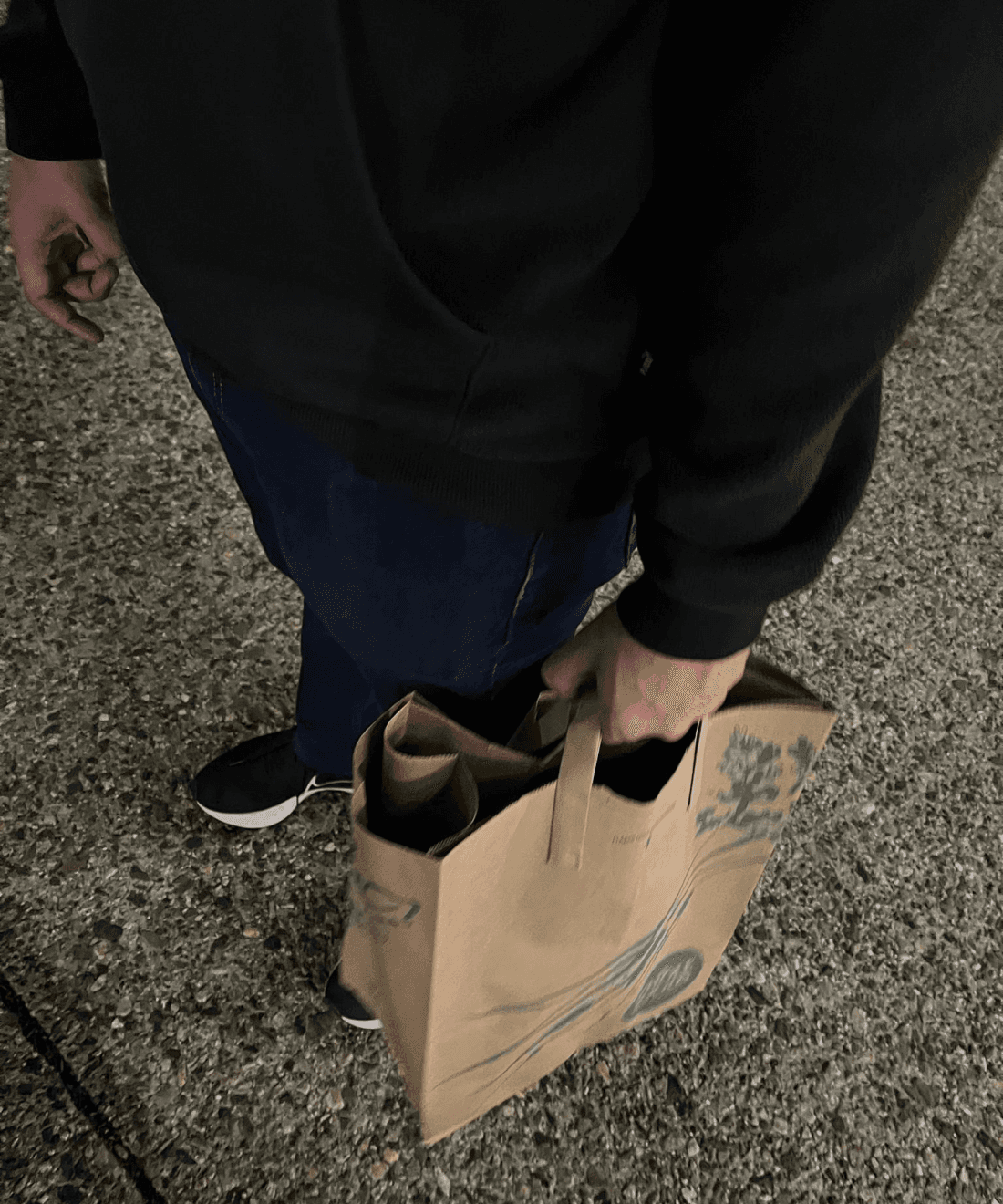
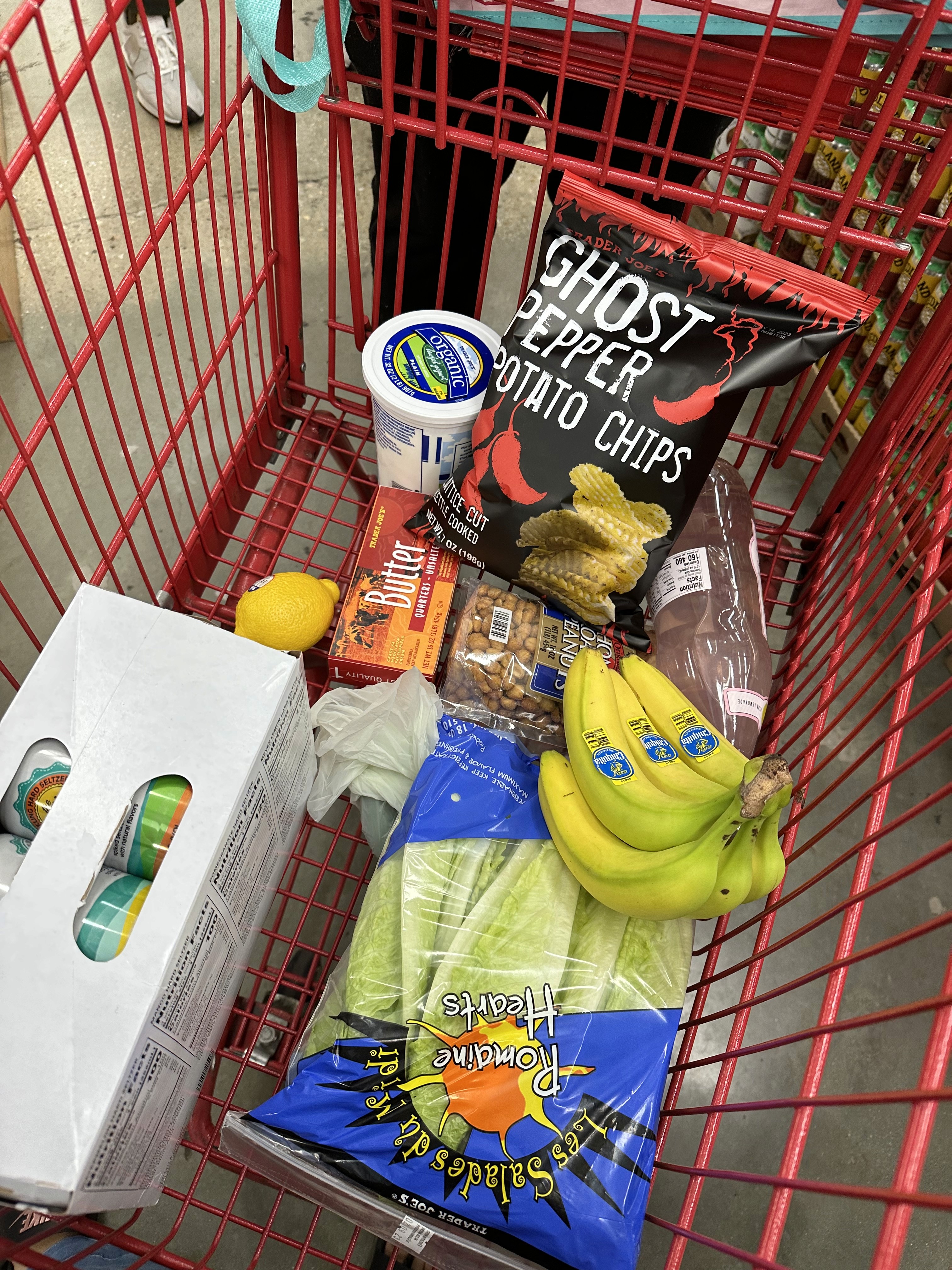
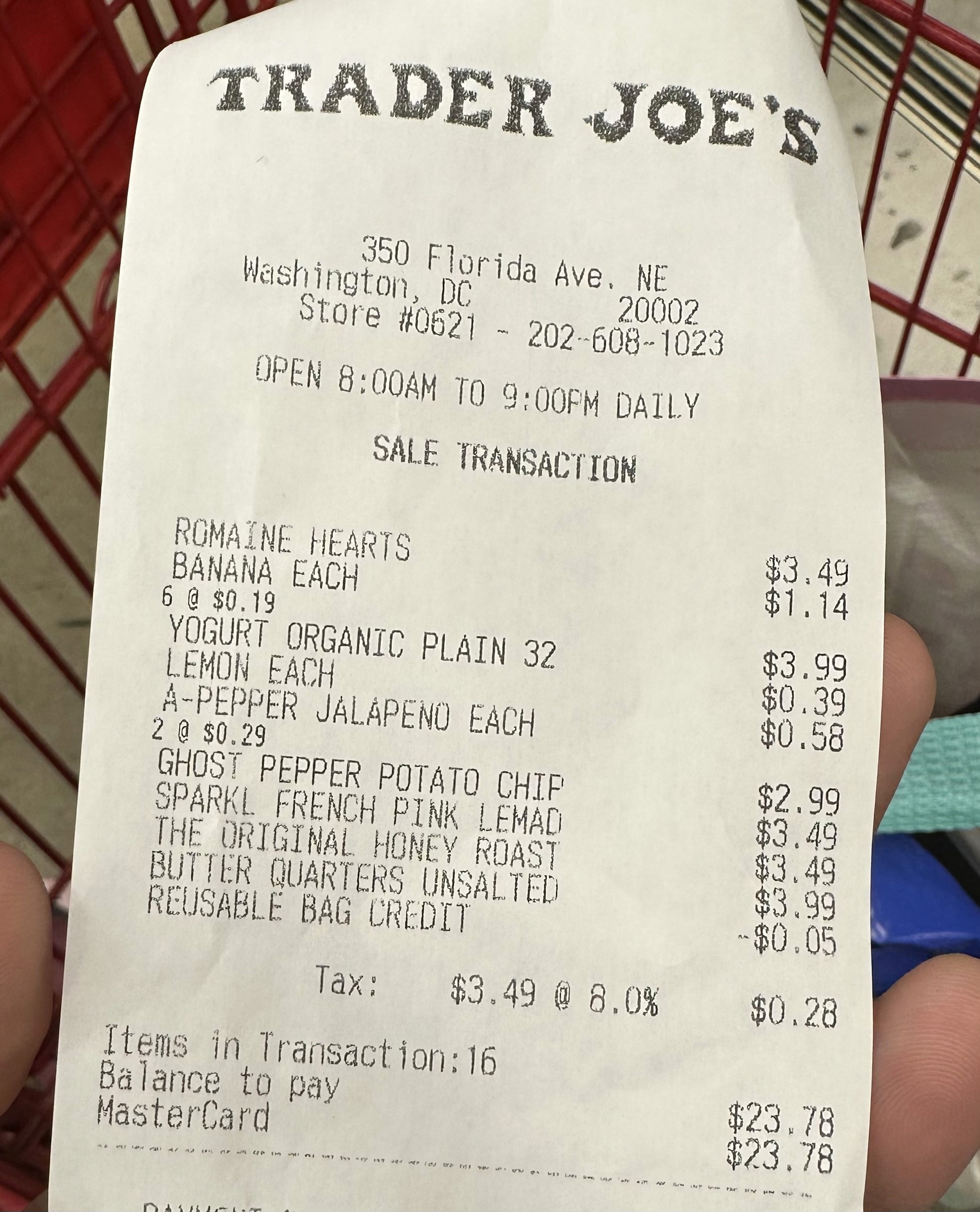
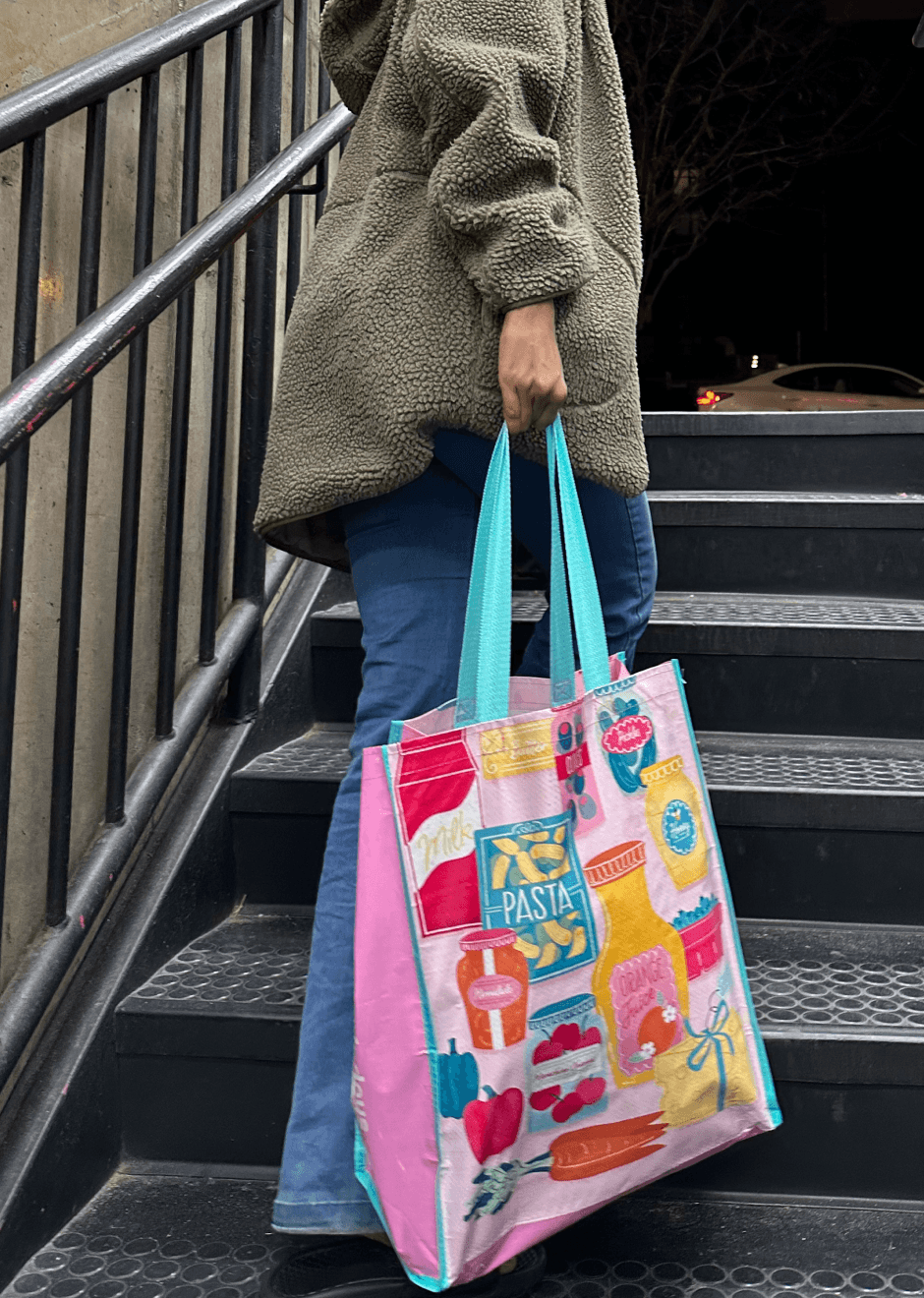
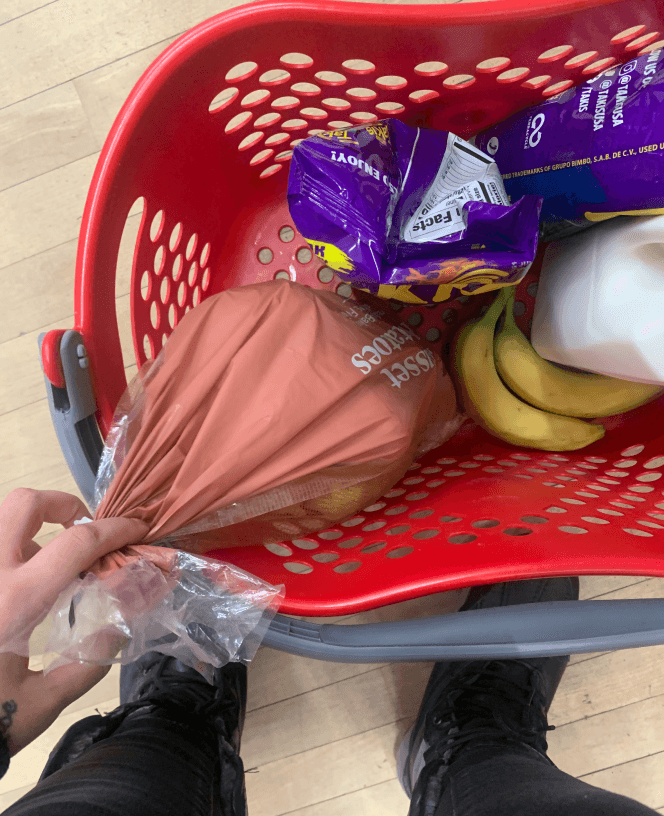
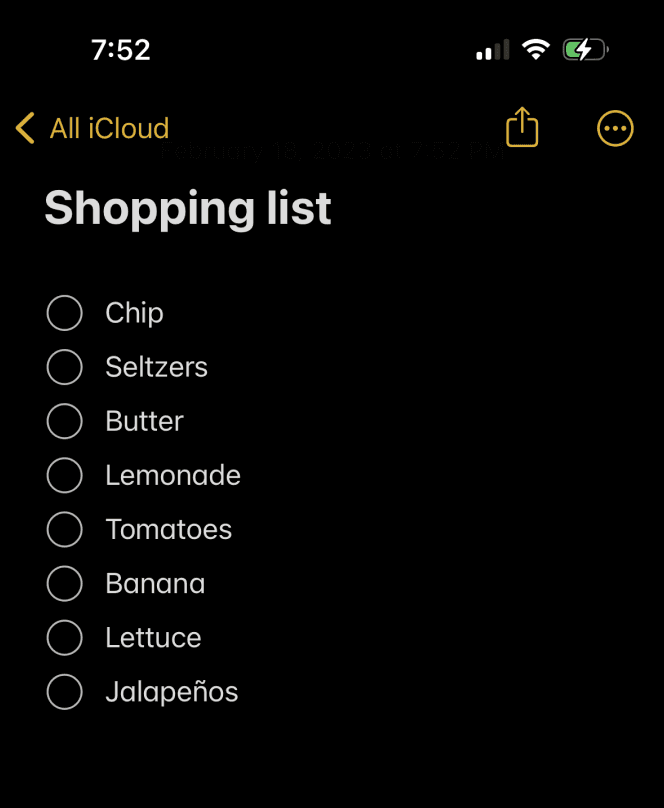
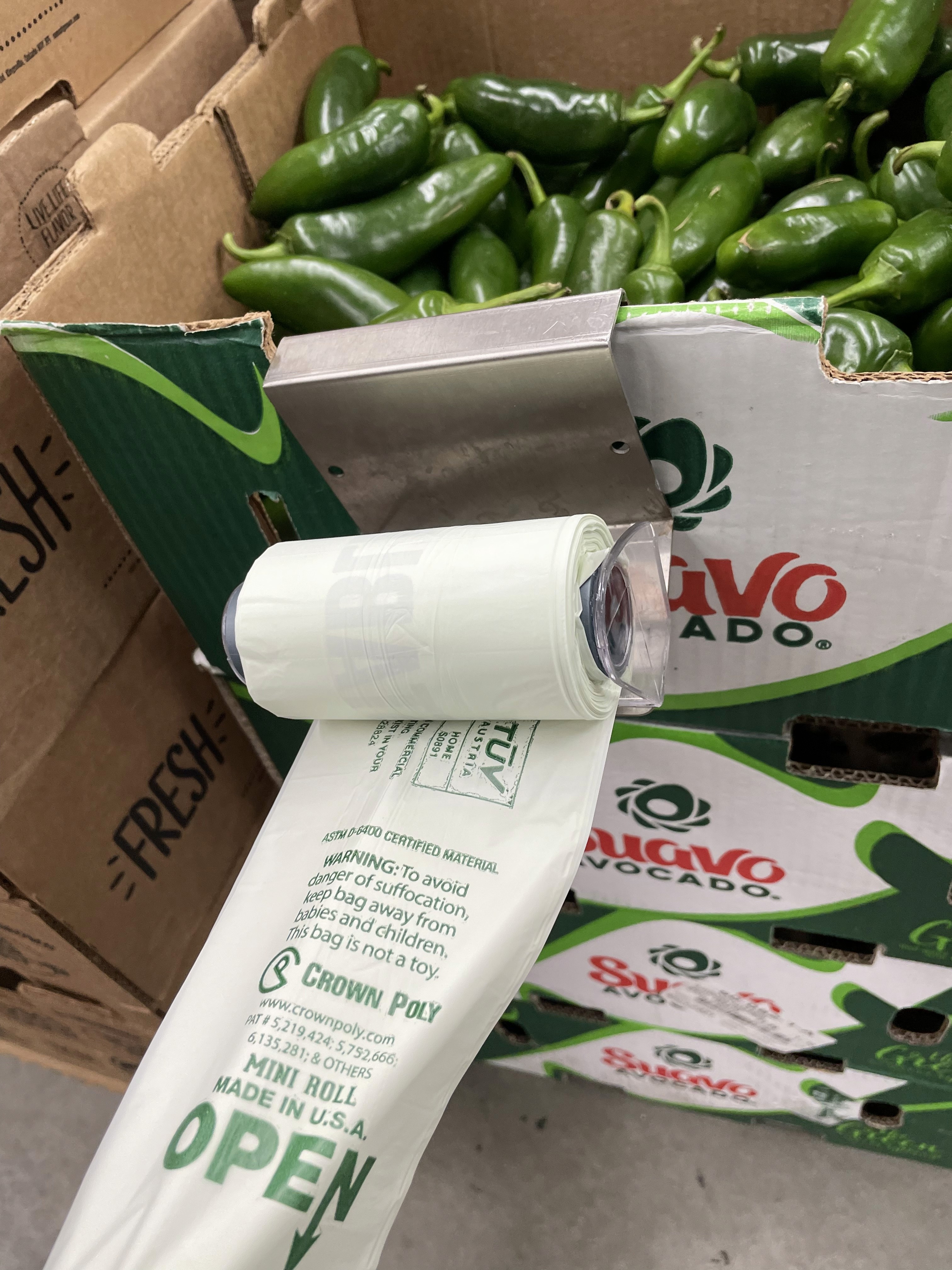
Key findings based on the survey, diary study, and the ethnographic studies:
Participants want to sort their purchases according to their preferences.
Self-checkout is helpful for people with fewer items but not really for people with a lot of items.
Store-provided shopping bags are often inconvenient, so many people prefer bringing their own.
Participants prefer carrying a shopping list so that it limits them from going over budget.
User Persona
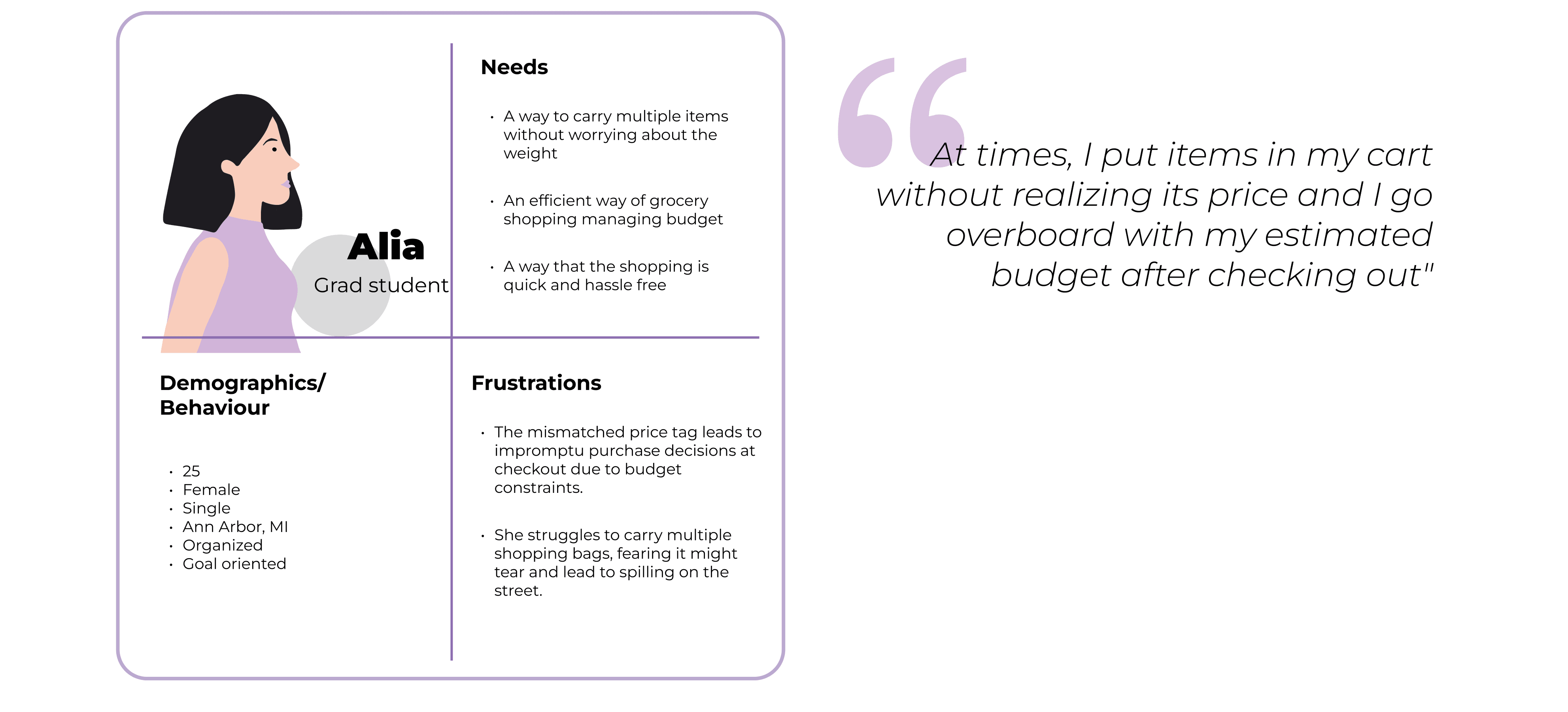
Journey Map

Specifically, this project revolves around implementing an IoT device and seamlessly blending it into the lives of shoppers without it being an added effort and improving in-person shopping experience.
HOW MIGHT WE
improve the shopping and check-out experience for people who prefer to shop in stores?
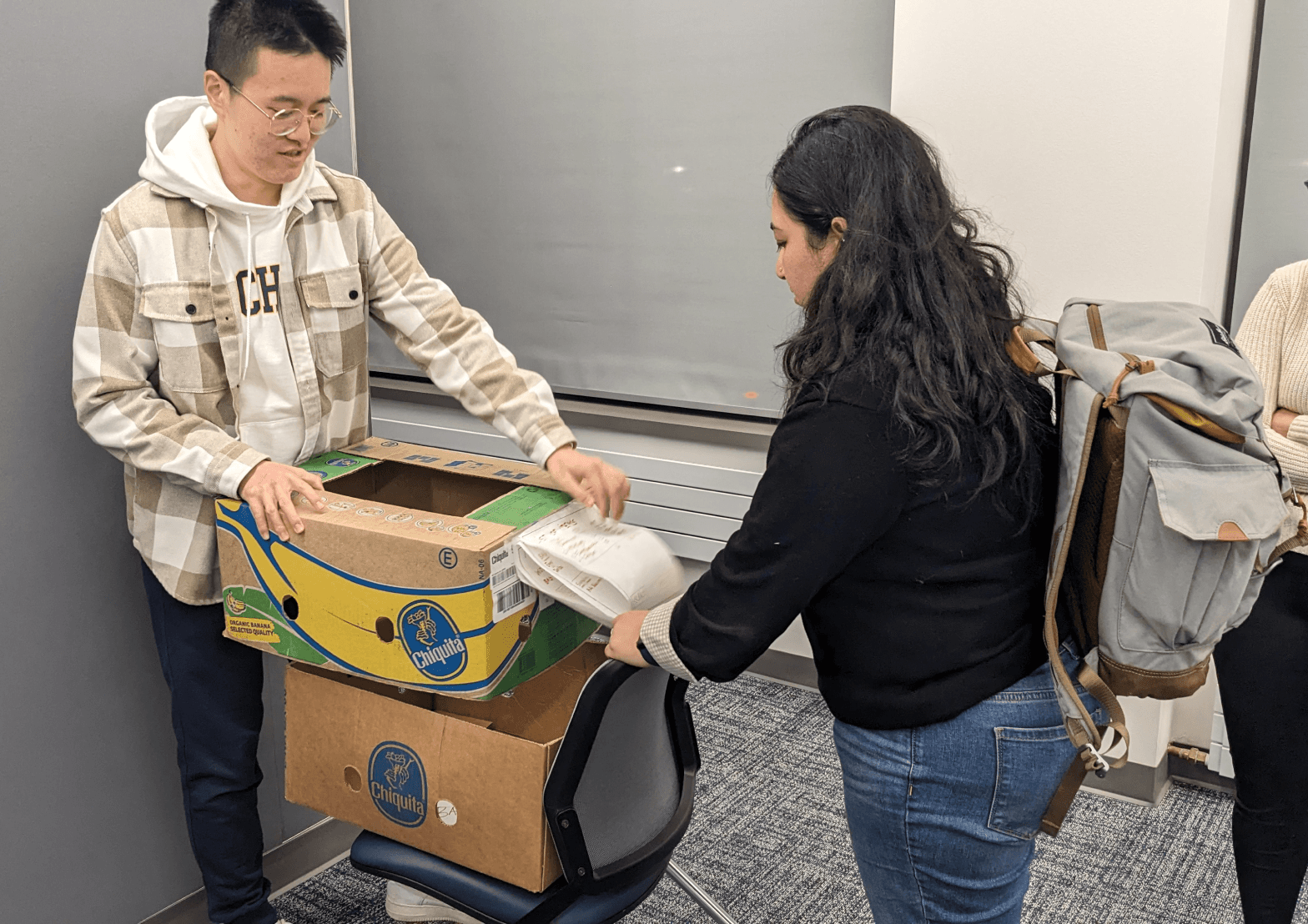
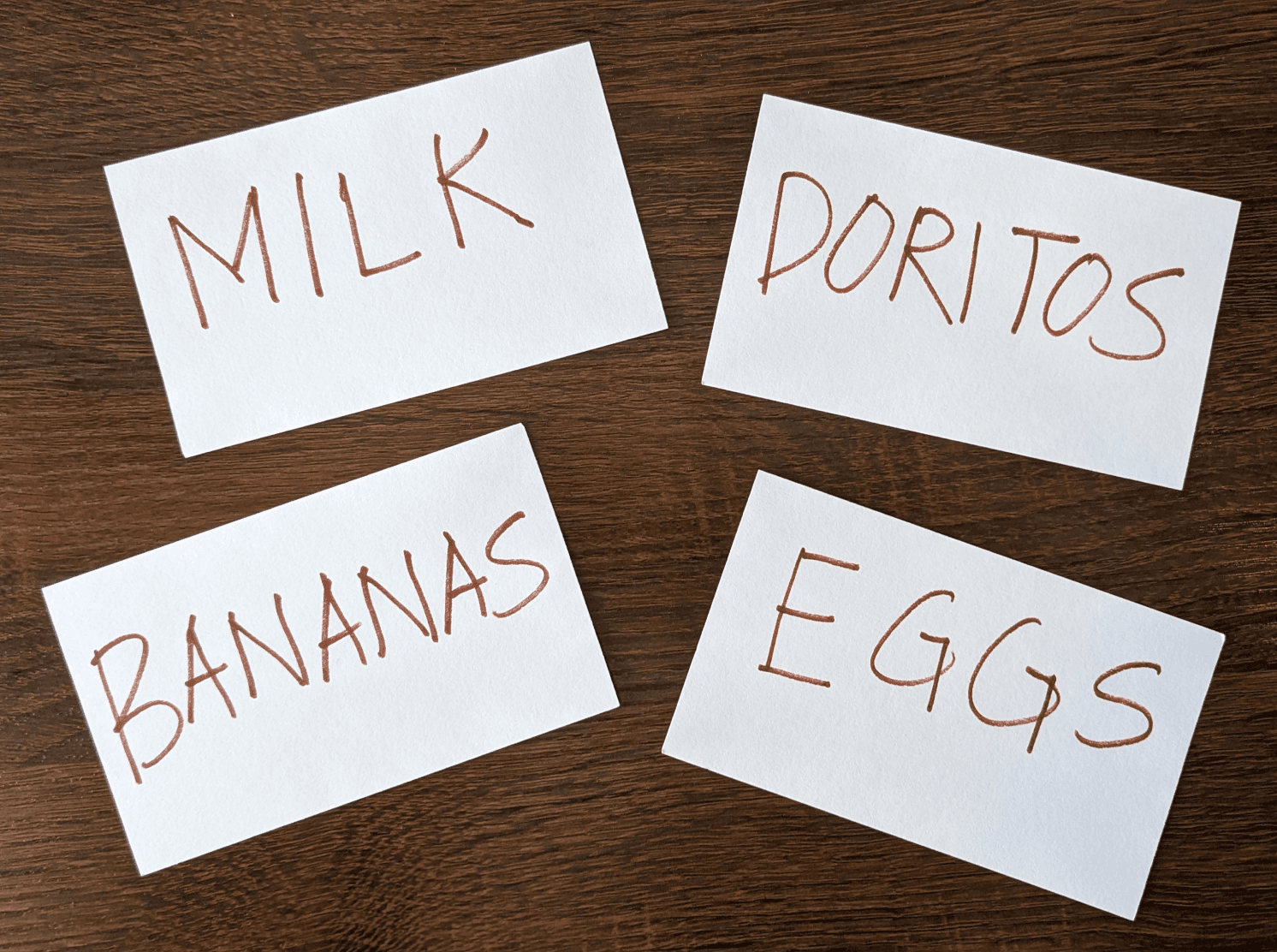
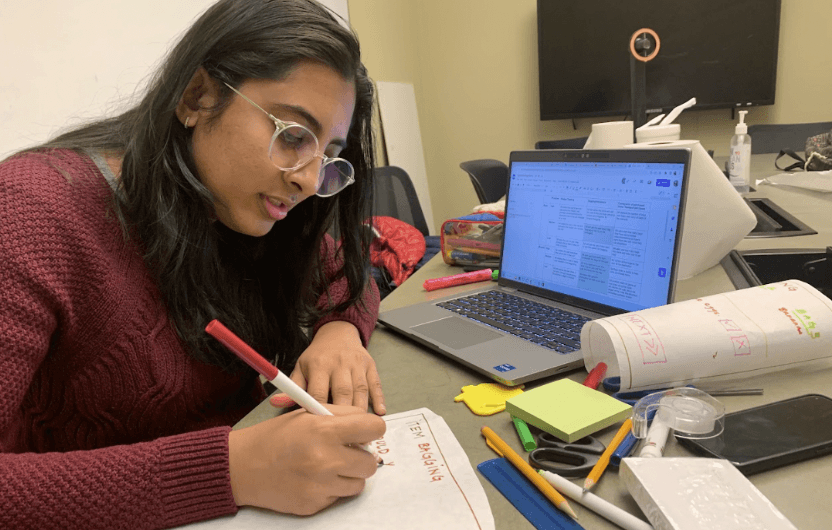
Scope Reduction led to Concept Refinement
To further refine the concept, we chose to investigate the optimization of the bagging process during the shopping experience. We conducted a User Enactment study to explore the potential of an assistant for bagging. Using a low-fidelity prototype with robotic hands that sorted and bagged items based on user preferences, we observed user reactions. The idea was to have a store-owned assistant at the checkout counter where the system with the power of AI will find an optimal solution for sorting items, and bag them automatically. However, it had its own limitations based on user preferences.
Customization is better than Optimization
Initially, we aimed for a streamlined checkout and bagging process, but users preferred customization over rigid optimization. This shift acknowledges the importance of allowing shoppers to personalize their experience and avoids imposing constraints on their preferences.
Heavy reliance on the system to complete the activity
Participants were relying on the feedback from the screen to initiate the next step. This was inhibiting the user from doing a task on their own.
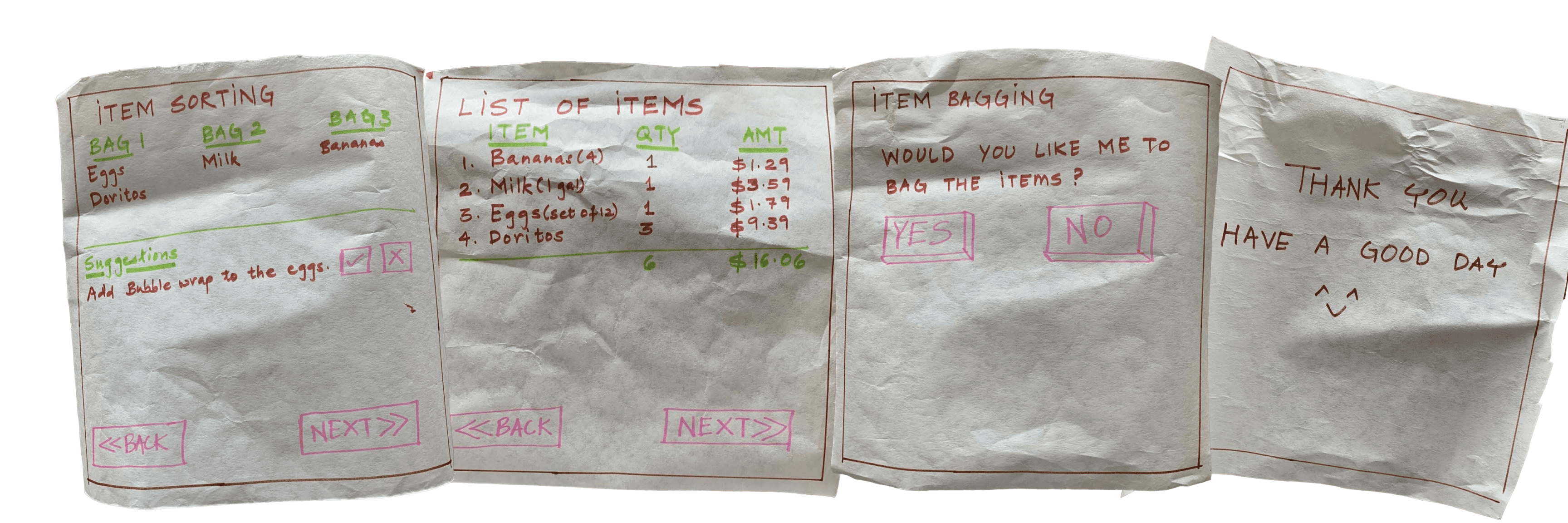
Paper prototype of the Shopping Assistant used for Enactments
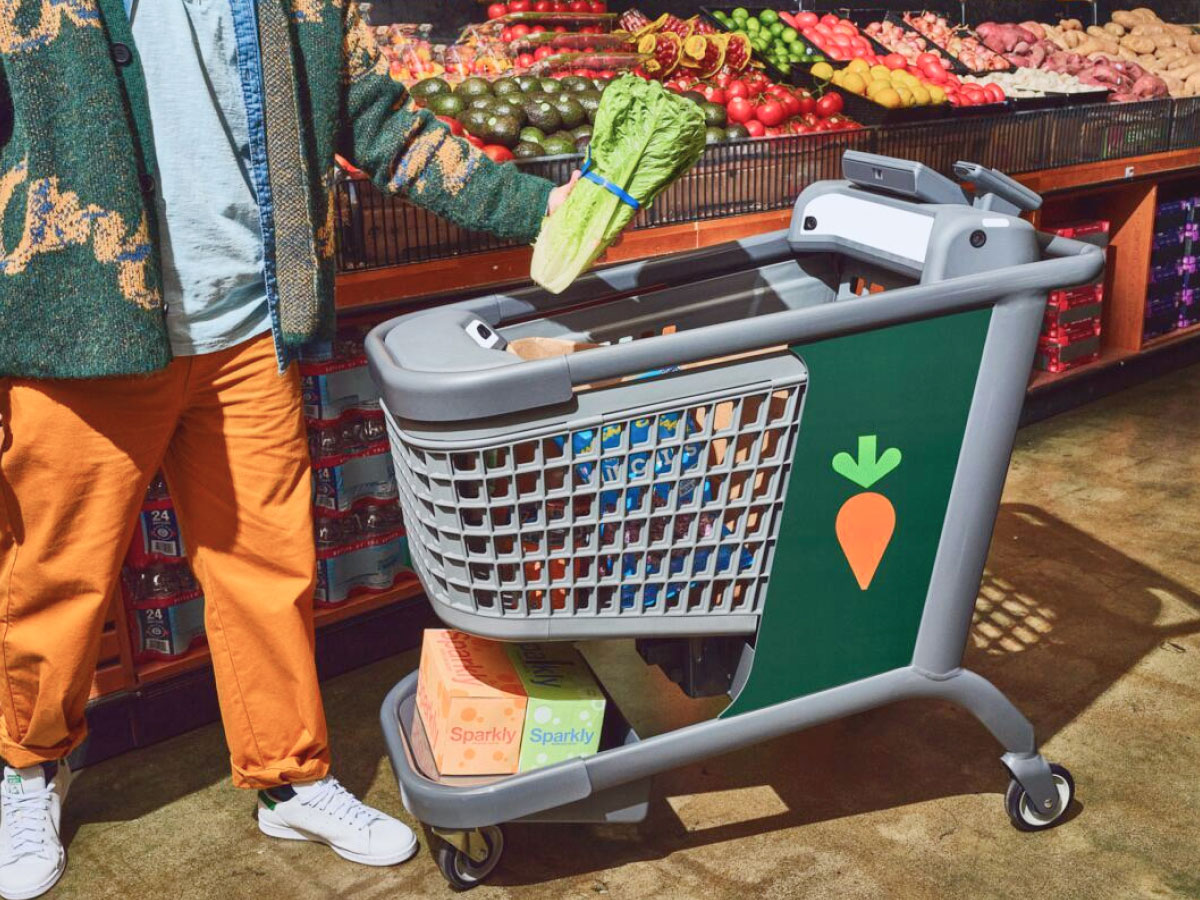
Caper AI cart by Instacart
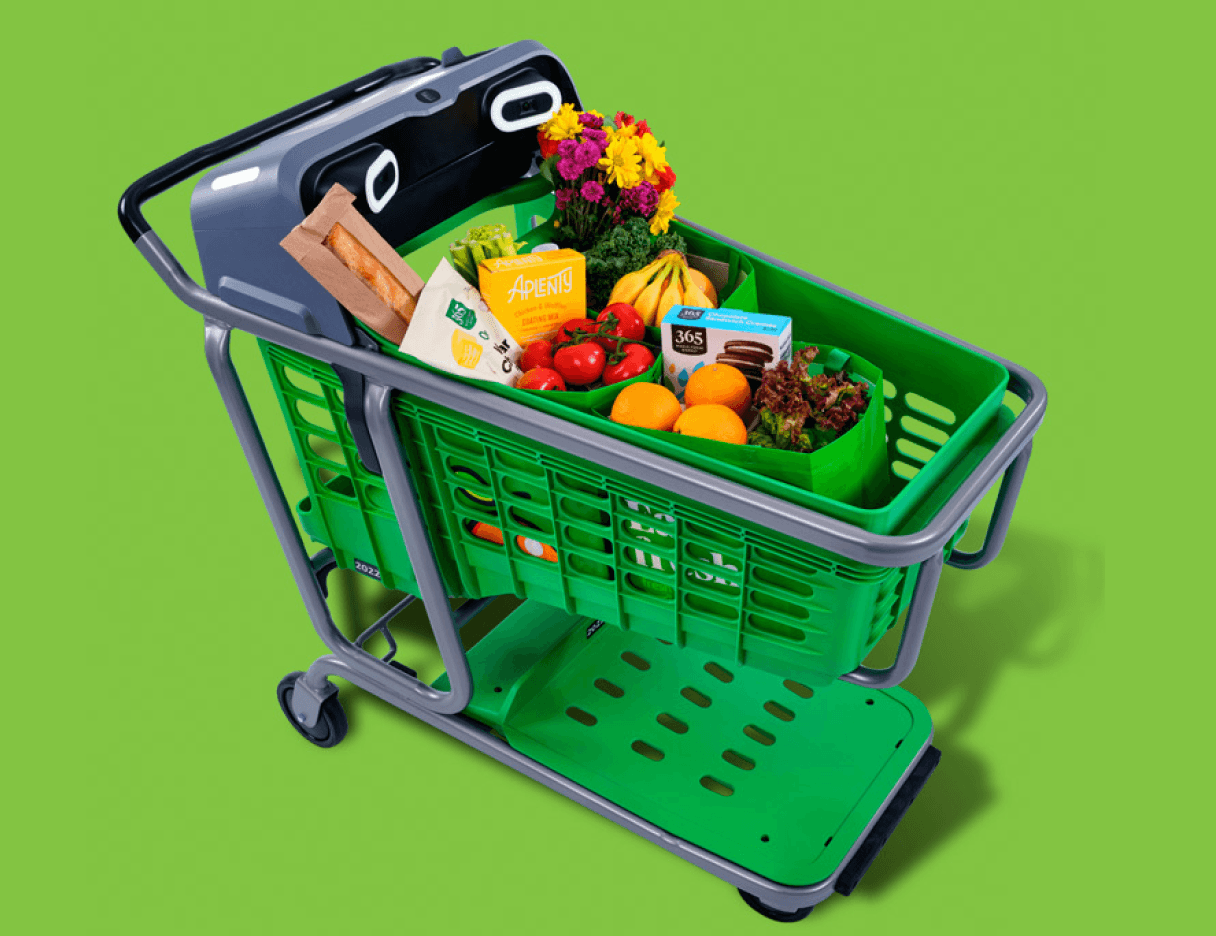
Amazon Dash cart at Amazon Fresh stores
While some companies offer smart carts, they are typically available only for use within the store - picked up at the entrance and returned at the exit. However, there are no smart carts designed for a more personalized experience - one that feels like something you can customize and take it home.
What if grocery stores made their inventory data publicly accessible based on the GPS location of the user?
When the user enters the store they can access the store inventory data immediately.
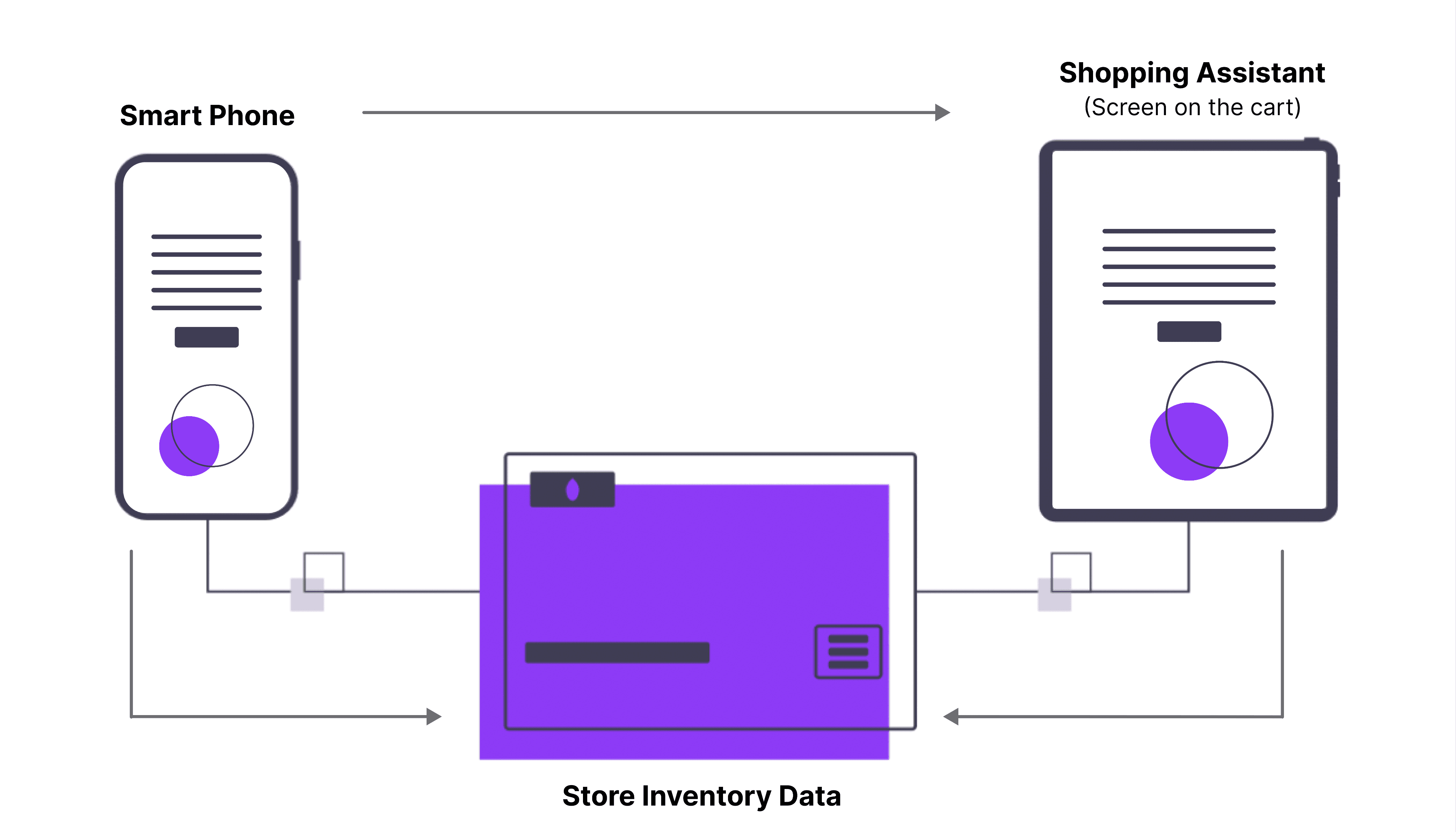
System Concept and Architecture
Mobile Application
Links cart and store with the user
Connects to cart for tracking
Downloads store inventory to track items and prices
Allows payment at checkout via NFC tag
Smart Cart
Autonomous, follows shopper
Tracks items for checkout
Displays running bill on touchscreen
Allows interaction (remove items, checkout) on display
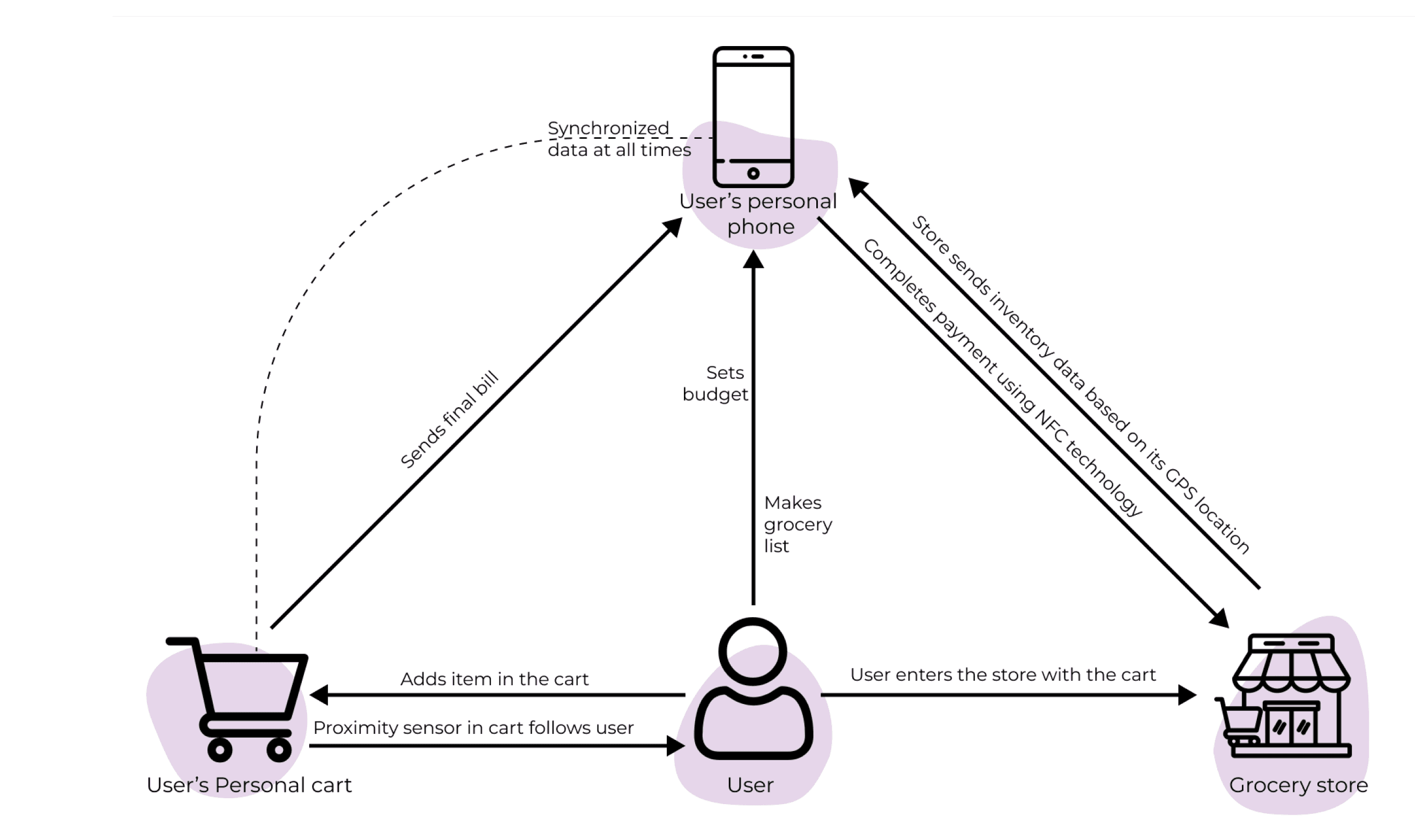
Conceptual Design
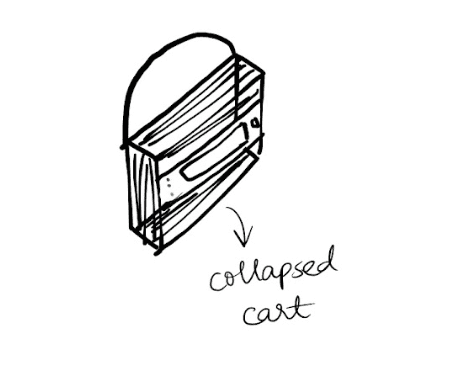
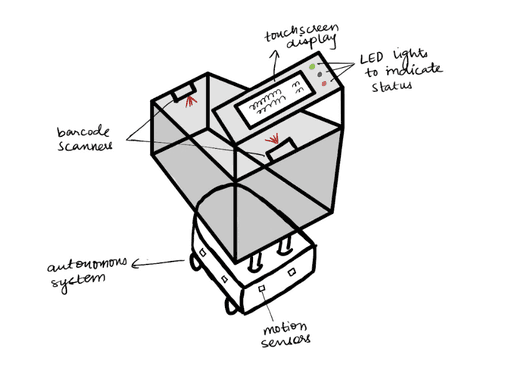
Storyboard
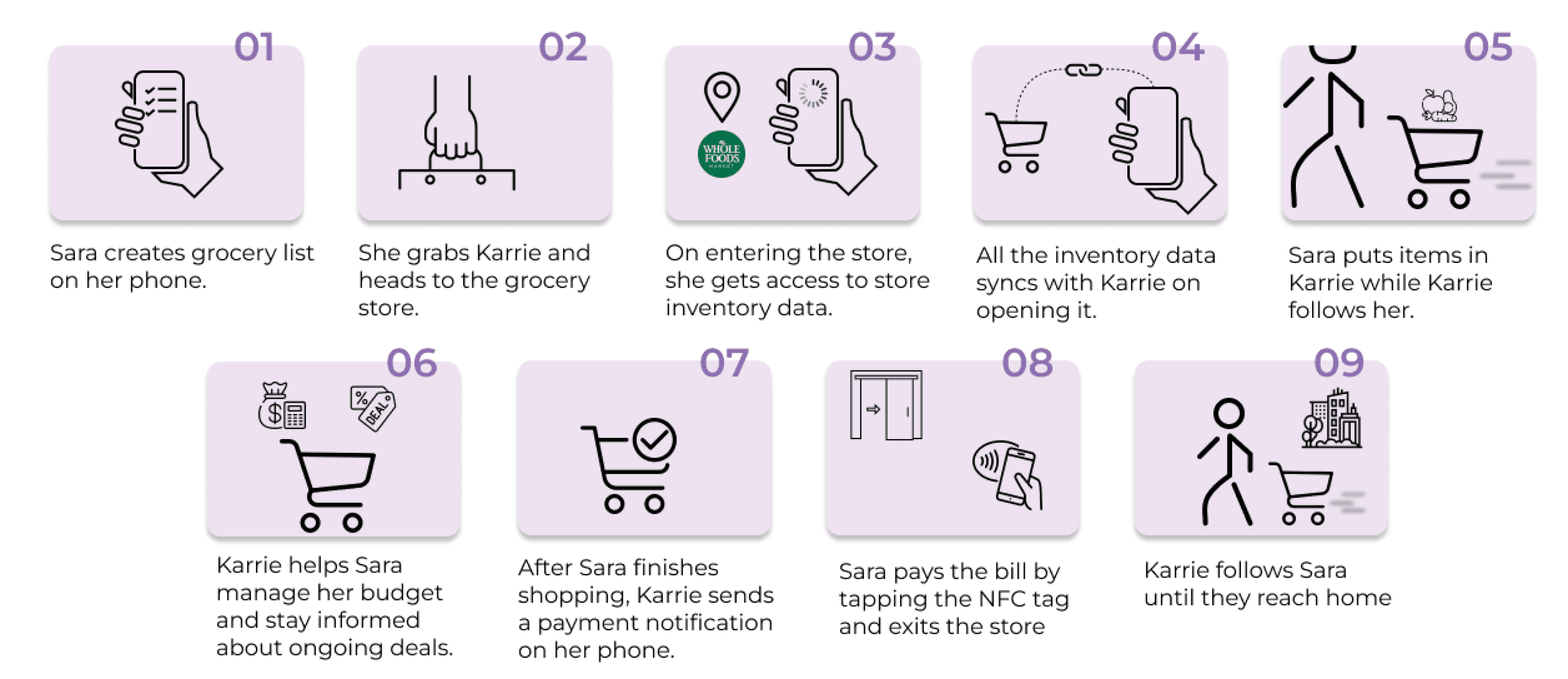

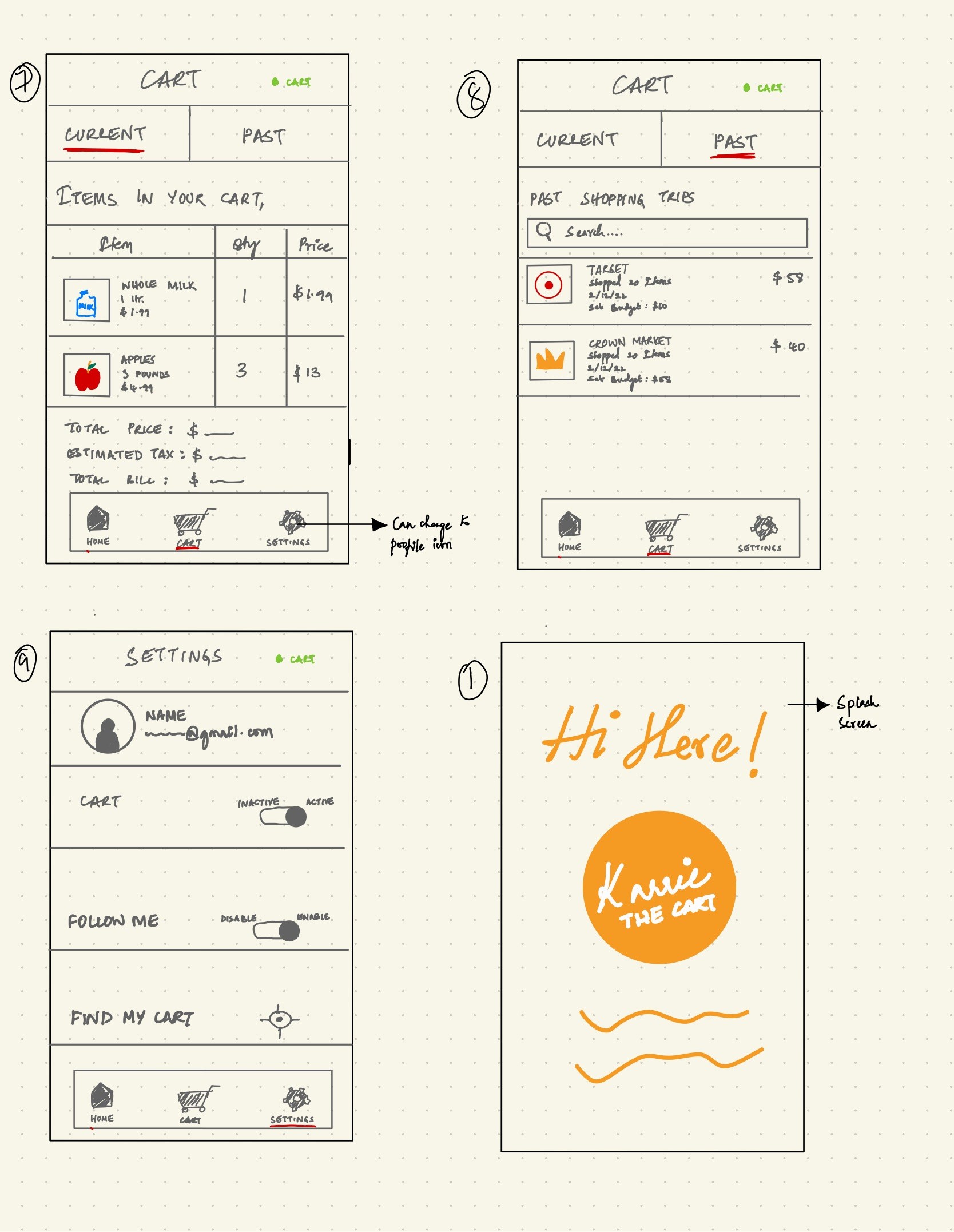
Lo-Fi Cart screen design
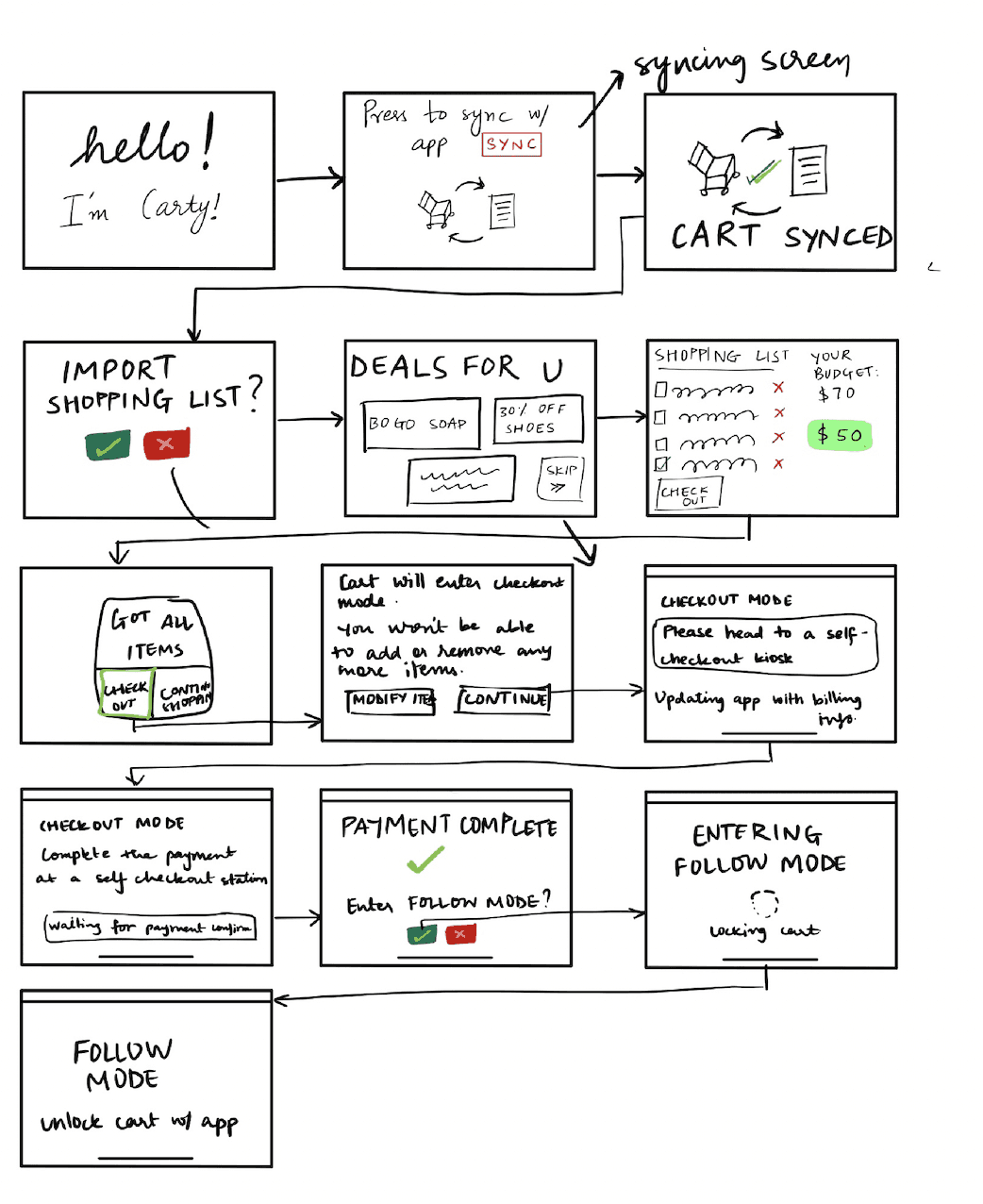
Style Guide

Prototyping Karrie
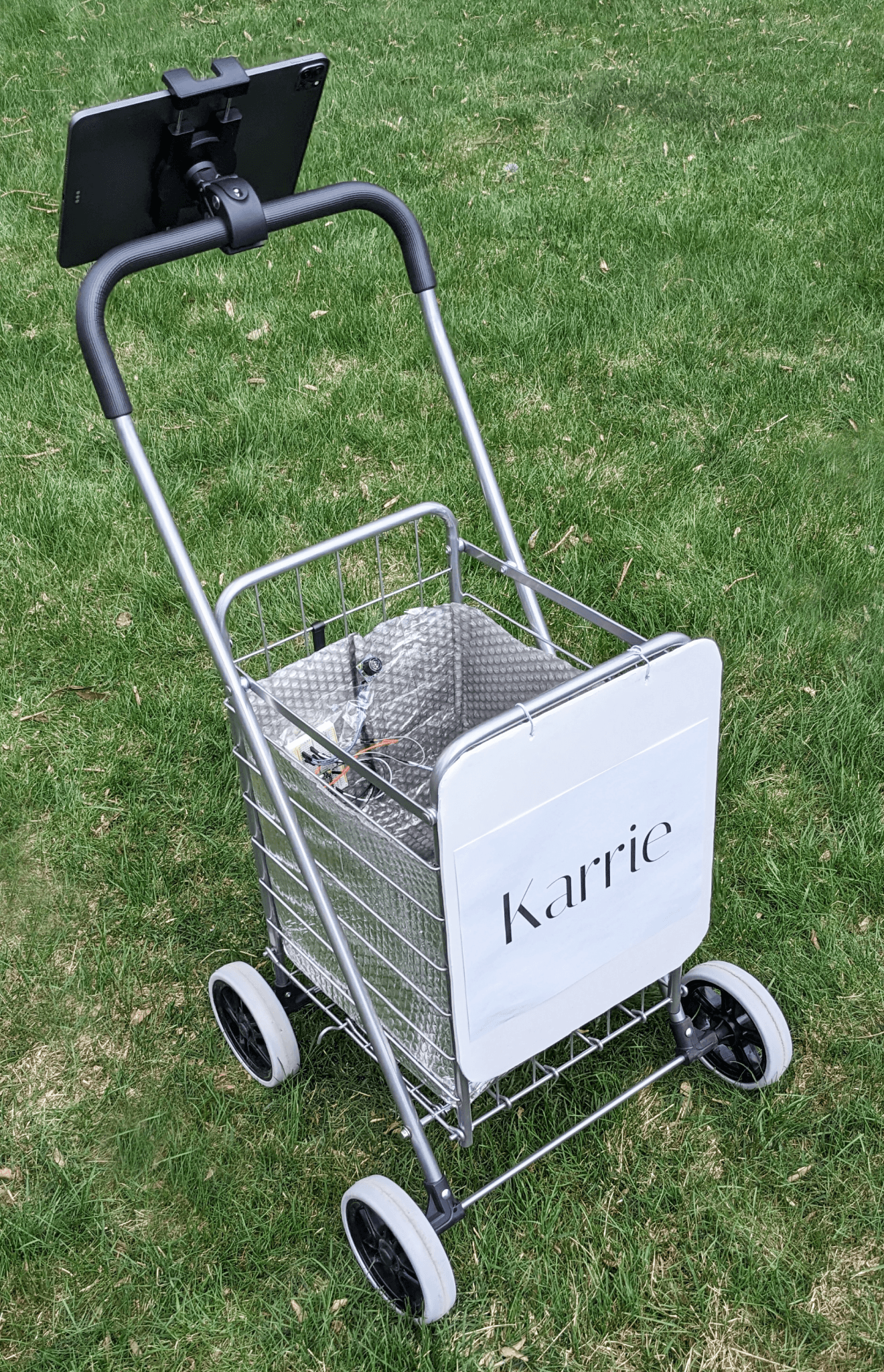
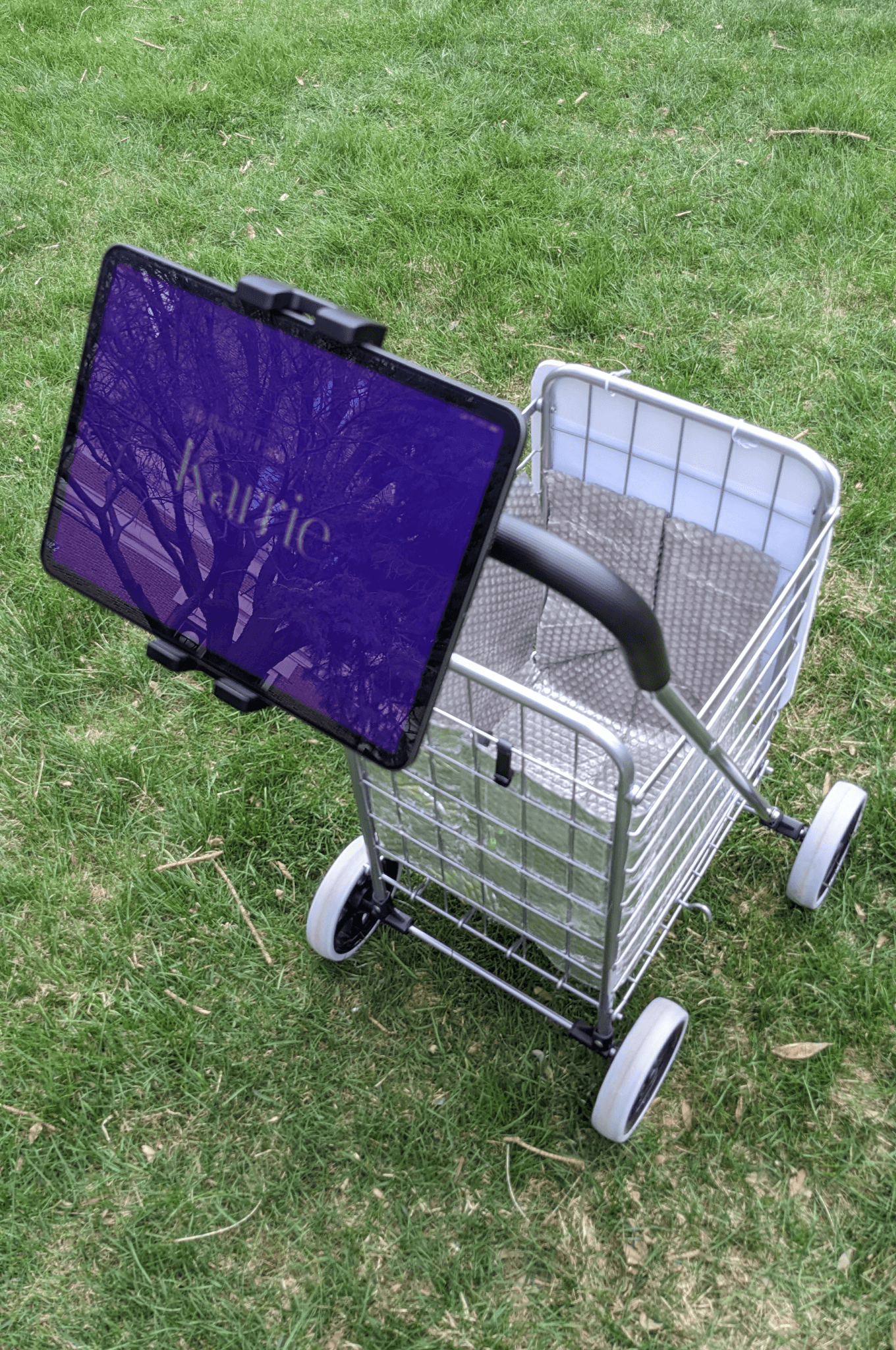
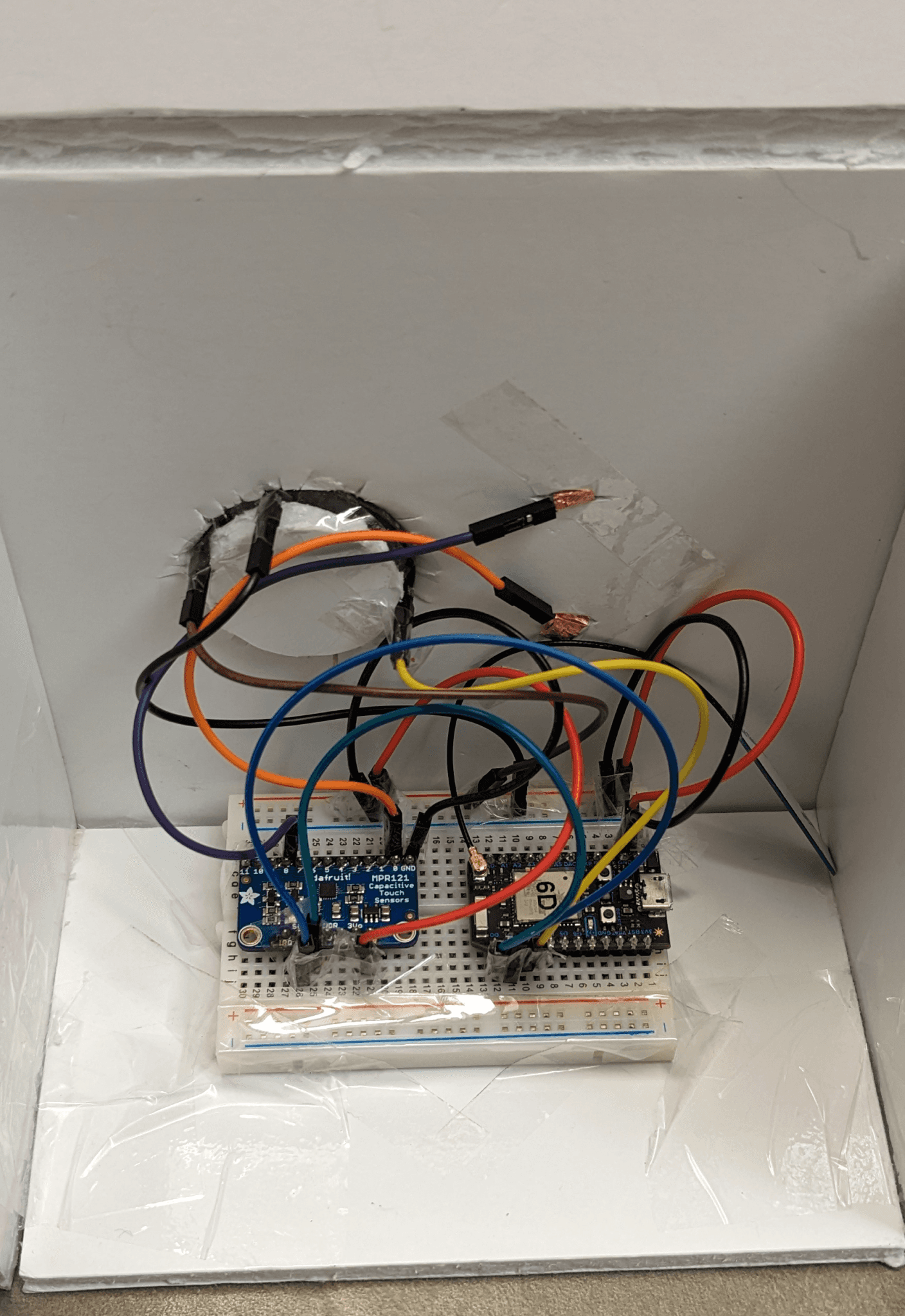
We prototyped Karrie for the demo by utilizing a regular shopping cart with an attachment of a tablet screen and a lid to lock the cart. We built a proximity sensor using Photon which is installed within the cart and a touch sensor to enact NFC payment.
Key features

Autonomous cart
It uses sensors to follow you, allowing
hands-free shopping.
Product scanner
Equipped with sensors and scanners for product identification and tracking.
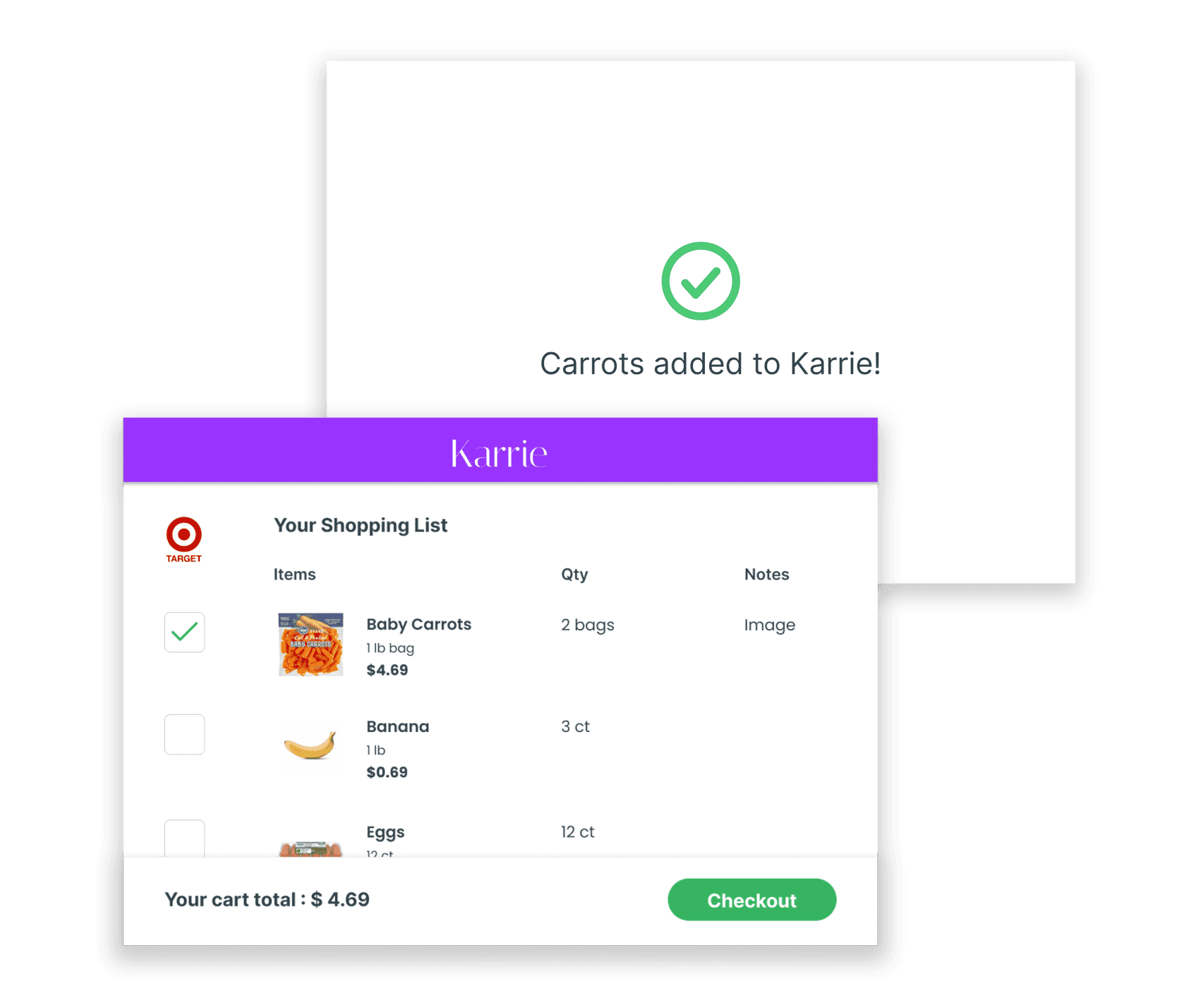

Budget tracking
The app allows users to set budget and receive alerts when they approach or exceed their limits, promoting expense control.
Demo Video
Karrie won the 'Most likely to attract investors' award 🏆
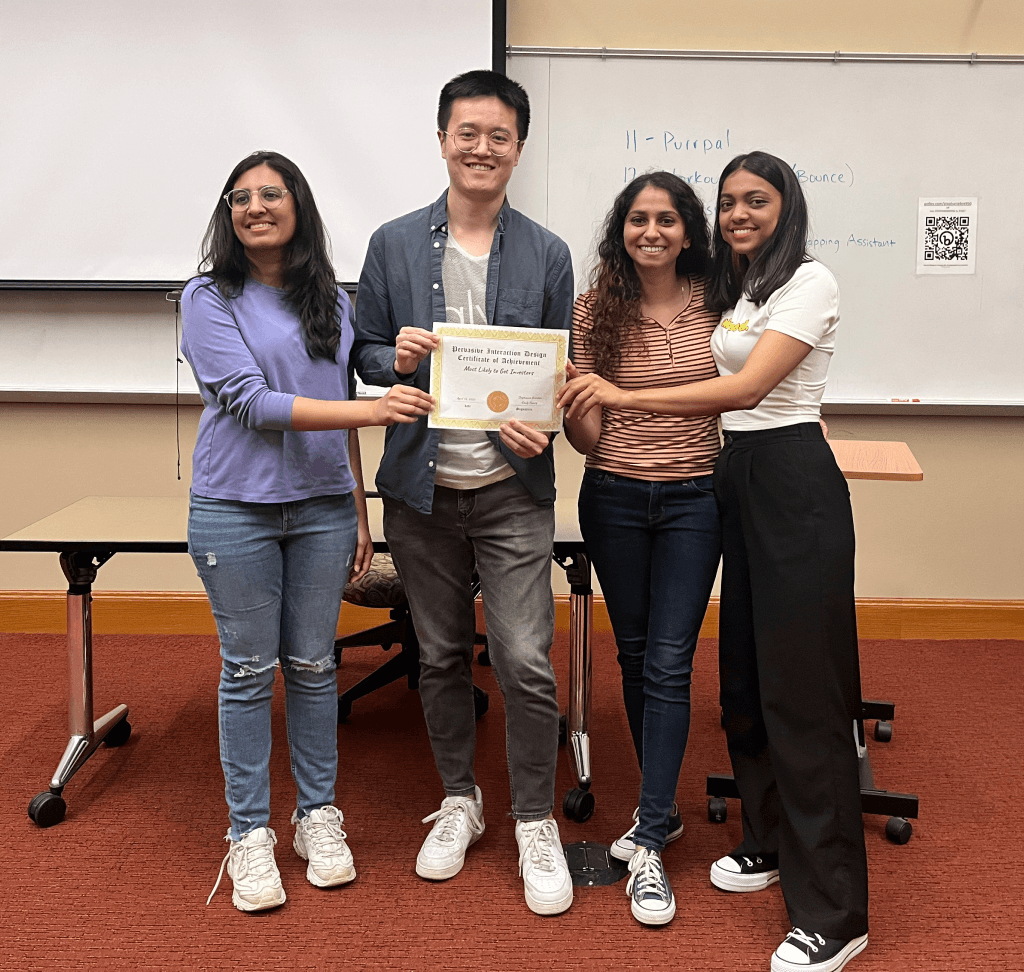
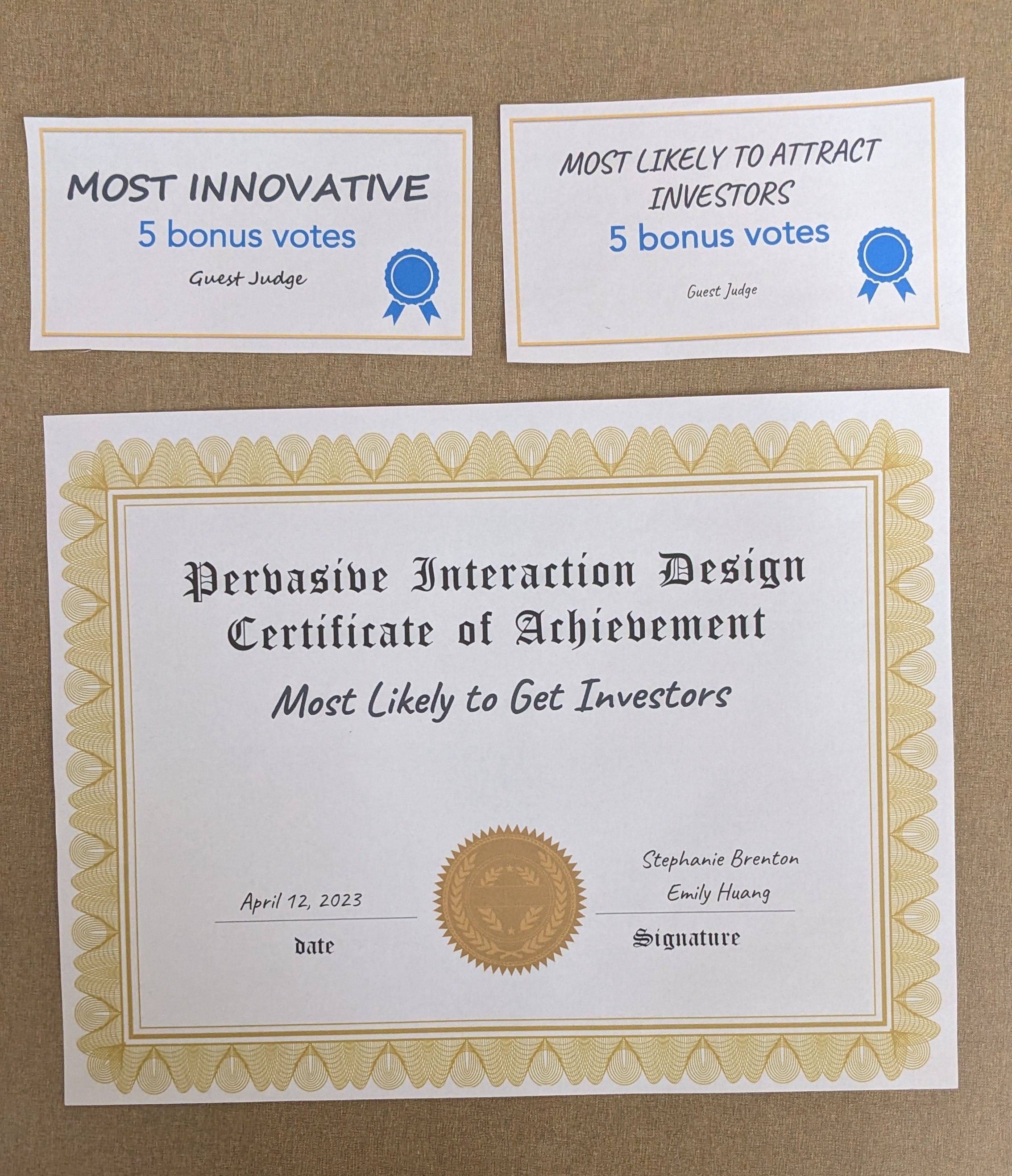
Limitations
Our product makes a futuristic assumption that all grocery stores will grant access to the Karrie App so that it can gather inventory data, which would subsequently help the cart keep track of the items in the cart.
The ‘follow me’ feature comes with its limitations when using it in crowded aisles.
Learnings
Every user is different and your design will be interpreted differently by each of them.
Breaking it down into achievable deadlines and keeping iterating the designs as they grow is the best solution.